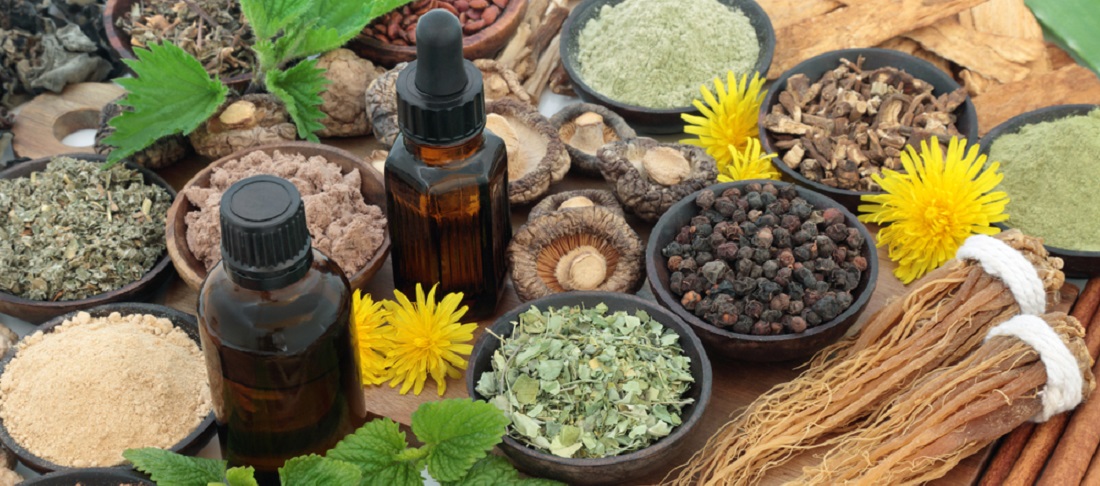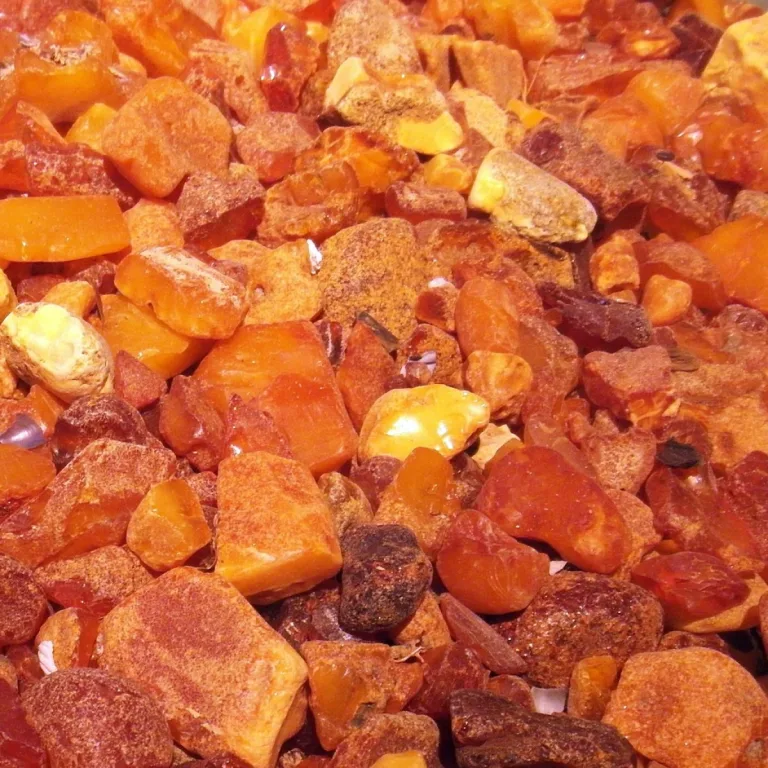Adaptogens or adaptogenic compounds are edible plants, medicinal mushrooms, herbs or other substances that hold a wealth of medicinal potential and are used in traditional medicine (particularly in parts of Asia and India) for thousands of years to treat a variety of ailments.
There are at least 70 types of herbal plants that are considered as adaptogens, and with so many adaptogens to choose from, it might be confusing.
Therefore, in this article, we try to clear up some of the confusion by making a list of the 28 most popular adaptogens, their effects, and medicinal uses.
Mushrooms and herbs in this adaptogens list are mostly based on Dr. Israel Brekhman’s findings, who devoted 45 years of his life to research on tonic herbs, and became a global authority on adaptogens in the 1960s. Eventually, he earned the nickname the “Father of Adaptogens.
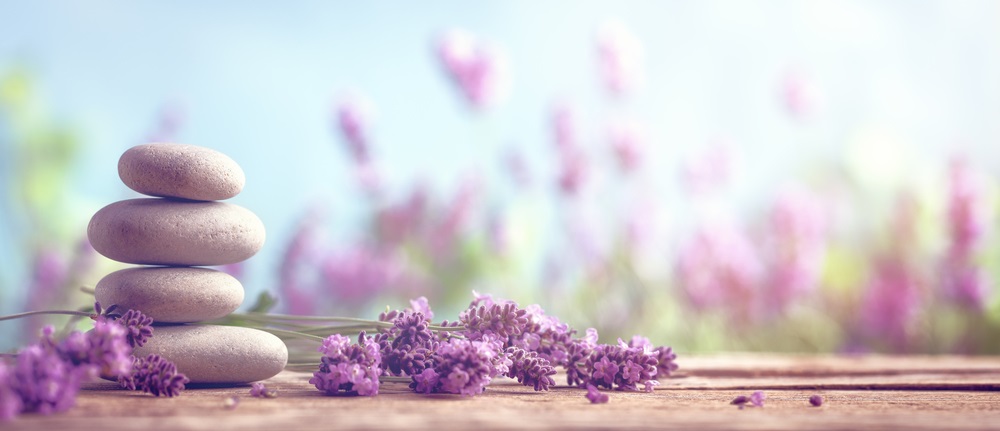
What Are Adaptogens?
Adaptogens or adaptogenic compounds are plant substances (edible herbs, plants and medicinal mushrooms) that act as herbal remedies and have been found to help our bodies manage stress and sustain balance (homeostasis). Homeostasis refers to any process that all organisms use to actively maintain fairly stable conditions necessary for survival.
If homeostasis is successful, life continues. If homeostasis is unsuccessful, it results in a disaster or death of the organism.
In other words, adaptogens are those that help us adapt to external stressors and maintain homeostasis. You can consume adaptogens as supplement capsules, teas, tinctures or sometimes even fresh.
Adaptogens can:
- Strengthen your internal systems.
- Stabilize mood, boost vitality, as well as improve focus and performance.
- Help build durability to stress and reduce its further affects on the body.
- Improve your body’s ability to adapt to biological, chemical, and physical stressors, such as for example tobacco, drugs, alcohol, highly processed foods, genetically modified foods, irradiated foods, and pesticides.
- At the same time stimulate normal balance of your body.
- As well as teach your cells how to adapt to the responses produced by the environment.
- Act as an immunomodulators, because adaptogens can either promote or silence your immune system.
Therefore, according to Dr. Brekhman – to be classified as an adaptogen, that certain plant must meet 4 criteria:
- Firstly, the plant has to be non-toxic, generally safe and cause no negative side effects (with correct dosing).
- Secondly, it has to help the body cope with stress.
- Thirdly, both single and prolonged use of the plant has stimulating effects, and broad benefits that improve the overall immune system.
- Finally, consuming the herb provides balance within the body and normalizes the body’s functioning.
However, adaptogens are not a cure, and may not work in severe or extreme cases of depression and anxiety. In addition, adaptogens work best when combined with sufficient hydration and a balanced diet (1, 2, 3, 4).
How Do Adaptogens Work?
Adaptogens function at a molecular level by setting a stable balance in the hypothalamic, pituitary, and adrenal glands (hypothalamic-pituitary-adrenal (HPA) axis), which is a complex system of glands, hormones, and receptors in the human body. The hypothalamic-pituitary-adrenal axis is crucial to your body’s stress responses, energy metabolism and homeostasis.
Therefore, when you consume adaptogens, their compounds and organic effects work to help balance all your bodily systems. For instance, if there’s too much of one hormone, the adaptogens help to lessen it. On the other hand, if there isn’t enough of a hormone, adaptogens can help restore its levels.
Adaptogens may also interact with the immune-neuro-endocrine system. That helps your body regulate its use of energy and sustain strong immune defenses. However research on adaptogenic herbs is still ongoing (3).

The List of 28 Most Popular Adaptogens
Adaptogens have been used and deeply respected by ancient cultures for thousands of years, and there are at least 70 types of herbal plants that are considered as adaptogens. However, all of them have not been thoroughly studied. Here is the list of some of the most popular adaptogens (1, 2, 3, 4).
1. Amla (Phyllanthus Emblica), also known as Amalika, Indian Gooseberry, Emblic, Emblic Myrobalan, Myrobalan, and Malacca Tree
Traditional Indian Ayurvedic medicine practitioners have used Amla for thousands of years. Luckily, now also studies verify its numerous health benefits. It is extremely rich in vitamin C as well as other antioxidants, and has been shown to be effective against high cholesterol and diabetes.
Moreover, amla may also possess chemomodulatory, chemopreventive and radiomodulatory effects (that modulates the effects of radiation), as well as anti-inflammatory, antimutagenic and immunomodulatory activities. These are all properties that may be effective in the treatment and prevention of cancer (5, 6, 7).
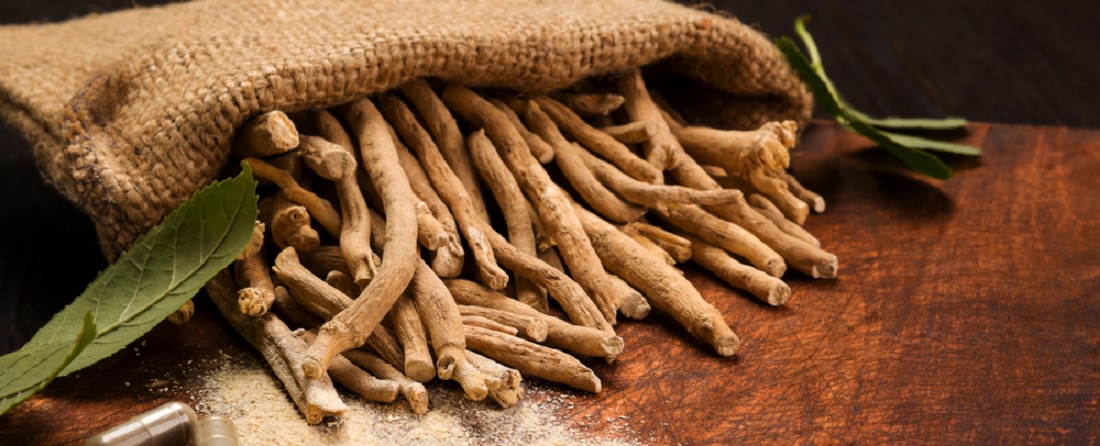
2. Ashwagandha (Withania Somnifera), also known as, Indian Ginseng, Winter Cherry or Poison Gooseberry
Ashwagandha is a supreherb that has many similar health benefits to ginseng, and is used as a household remedy by Indians, who consider Ashwagandha as the best tonic for children and old people, as well as aphrodisiac for young people. It is one of the greatest nervine tonics of Ayurveda, the most ancient alternative medicine system.
It is an extremely powerful antioxidant that is beneficial to the nervous, immune, cardiovascular, and endocrine systems. In addition, Ashwagandha has also been demonstrated to be extremely efficient against depression.
Moreover, due to its diverse pharmacological actions such as antitumor, anti-stress, neuroprotective, anti-arthritic, analgesic and anti-inflammatory effects, Ashwagandha is a really powerful regenerative tonic (Rasayana of Ayurveda). Learn more.
Therefore, Ashwagandha might be useful herbal remedy for different types of diseases such as:
- Parkinson
- Dementia
- Memory loss
- Depression and anxiety
- Stress induced disease
- Malignoma and others (8).
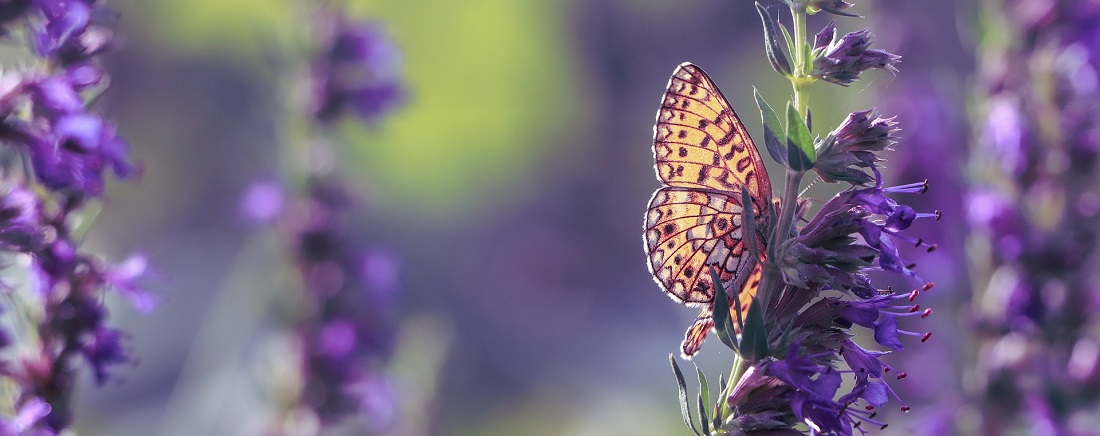
3. Bacopa Monnieri, also known as Brahmi, Water Hyssop, Hyssop, Thyme-leafed Gratiola, Herb of Grace, and Indian Pennywort
Bacopa is a herb native to South Asia with a long history in Ayurvedic medicine. Some people use it to treat stress related conditions such as cognitive impairment and nervousness. Bacopa is thought to have the ability to regulate cortisol levels during stress, and to improve cognitive performance in those facing chronic stress (10).
4. Astragalus (Astragalus Membranaceus), also known as Mongolian Milkvetch and Huáng Qí
Due to its possible antiviral, antibacterial and anti-inflammatory properties, Astragalus has been familiar in traditional Chinese medicine for centuries. Therefore, some people use it sometimes to treat wounds (application to the skin), to improve blood flow, as well as to strengthen the immune system.
Usually combined with other herbs, some people use astragalus supplements also for numerous other conditions, including upper respiratory infections, asthma, allergic rhinitis (hay fever), chronic fatigue syndrome, and chronic kidney disease.
However, high-quality studies are still needed to confirm the health benefits and safety of Astragalus (9).

5. Bilberry (Vaccinium Myrtillus), also known as European Blueberries
Scientific studies confirm that bilberry may possess numerous benefits for people looking to optimize their health and well-being. Bilberry’s are rich in antioxidants, anthocyanins, quercetin, and resveratrol, and may provide protection for the eyes, blood vessels, and the cardiovascular system.
For a long time, herbalists have suggested antioxidant rich bilberry for strengthening vision and treating health conditions like urinary tract problems , constipation, diarrhea, and kidney stones. Some people use bilberries also for the respiratory, reproductive and endocrine systems.
In addition, although more high quality evidence is needed, some studies suggest that bilberry may help prevent infections and help defend against cancer (11).
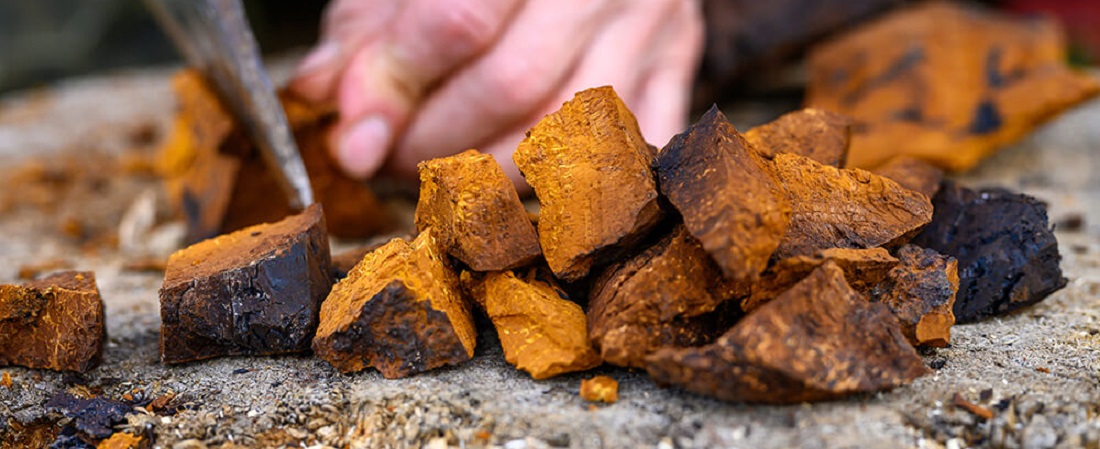
6. Chaga Mushroom (Inonotus Obliquus), also called “Mushroom of Immortality”
The Chaga mushroom is the most nutritious wild mushroom that has been used in folk medicine to treat several disorders. Chaga is an exceptionally powerful antioxidant that delivers you an impressive dose of antioxidants, SOD enzymes, essential amino acids, minerals and other vital substances. Learn more.
Animal and test-tube studies have found that Chaga mushrooms may have several health benefits for you. For instance, the mixture of these extraordinary substances is claimed to:
- Boost your immune system
- Remove free radicals from your body
- Protect cells
- Enhance resistance
- Fight pathogens
- Lessen inflammation
- Lower bad cholesterol
- Prevent long-term inflammation
- Fight cancer
- Lower blood sugar
- Have antitumor properties
- Prolong cellular proliferation and extend lifespan.
Still, there is a need for more human studies to confirm all these statements.
7. Cordyceps (Ophiocordyceps Sinensis (formerly known as Cordyceps Sinensis))
Cordyceps is a powerful medicinal mushroom that has been acknowledged in Chinese medical books and Tibetan medicine for a long time. This plant is a rare combination of caterpillar and fungus. Some studies suggest, that different strains of cordyceps, or some components inside this mushroom may have different beneficial effects on the human body, which include:
- immune boosting,
- anti-tumor,
- anti-metastatic,
- antioxidant,
- anti-inflammatory,
- antimicrobial,
- hypolipidemic,
- hypoglycemic,
- anti-aging,
- neuroprotective,
- anti-stress,
- and renoprotective effects.
Traditional healers and local people of Sikkim suggest Cordyceps sinensis for multiple health problems as a single drug or together with other herbs. For instance, these folk healers use it to cure as many as 21 different health conditions.
In traditional Chinese medicine, it has been hand-picked and dried for centuries to treat fatigue, kidney disease, low sex drive and many more illnesses. The long history and the potential benefits of Cordyceps might be the reasons why dietary supplements and other products containing Cordyceps are achieving so much admiration. Learn more.
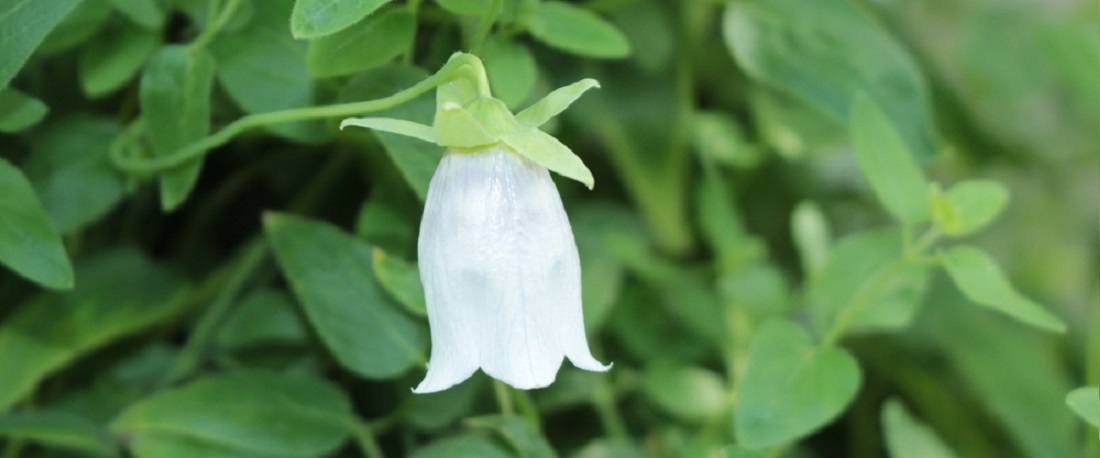
8. Dang Shen (Salvia Miltiorrhiza), also known as Codonopsis
Dang shen has a long tradition in Chinese medicine, as it may increase your capability to protect against high levels of anxiety, stress, fatigue and trauma. Additionally, it has been studied as a promising candidate in preventing and treating colitis and in reducing the risks of inflammation-associated colorectal cancer (12, 13).
9. Elderberry (Sambucus Nigra)
There are around 30 types of elder trees and plants all over the world. But the Sambucus nigra (the European version) is the one that may have the biggest benefits to your health and possess most healing properties. The flowers and berries of elderberries are high in antioxidants, vitamin C and other vitamins that may positively affect your immune system. They may also help lower inflammation, protect your heart, and lessen stress.
Some people suggest elderberry to help prevent and relieve the symptoms of cold and flu. Elderberry has also been used as a treatment for headaches, fever, constipation, joint and muscle pain, epilepsy, kidney problems, minor skin conditions, HIV and AIDS, infections that affect how you breathe and stress.
However, although elderberry is known healing agent in folk medicine, its success in medical experiments is less definite (14).

10. Eleuthero (Eleutherococcus Senticosus), also known as Siberian Ginseng
Although, there is no sufficient scientific evidence to support most of its uses, this adaptogenic herb is still used to treat numerous health conditions such as:
- Athletic performance
- Bronchitis
- Common cold
- Upper airway infection
- Familial Mediterranean fever (an inherited fever disorder)
- Bipolar disorder
- Heart disease
- Chronic fatigue syndrome (CFS)
- Cognitive function (memory and thinking skills)
- Diabetes
- Diabetic neuropathy (nerve pain in people with diabetes)
- Hangover
- Quality of life
- Stress
- Fibromyalgia
- Flu (influenza)
- High cholesterol
- Pneumonia
- Osteoarthritis
- Osteoporosis
- Other conditions
However, there is sufficient scientific evidence that eleuthero may be effective for genital herpes, as taking a specific eleuthero extract (Elagen) can reduce how often genital herpes flares up (15).
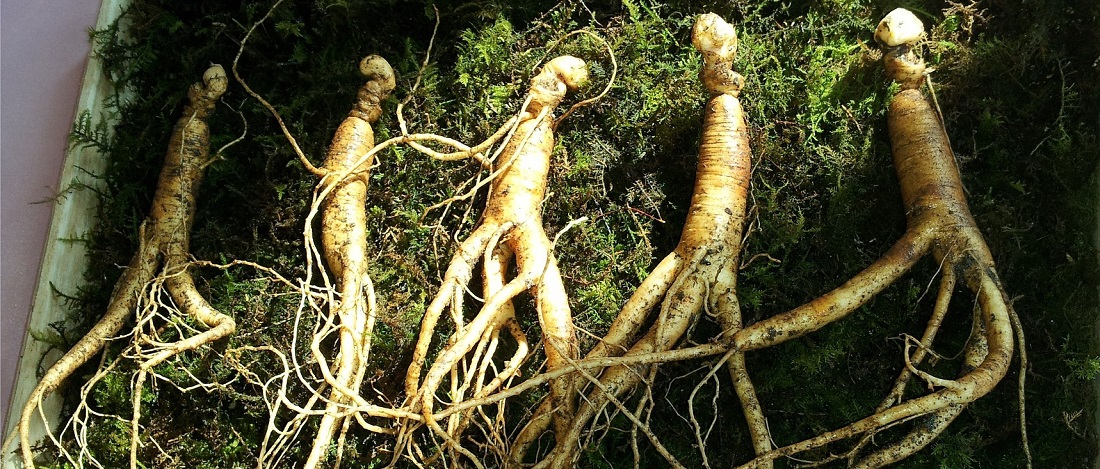
11. Ginseng
Ginseng is one of the most common and known adaptogens. It is a forked-shaped, light-colored, relatively long root that also has a long list of potential health benefits. There are many different forms of ginseng, but the most common ones are Asian ginseng (P. Ginseng), and American ginseng (Panax quinquefolius, L.). These both forms may lower blood sugar and cholesterol levels, boost energy, reduce stress, promote relaxation, treat diabetes, and manage sexual problems in men.
It is even said to possess anti-cancer, anti-fatigue, and anti-inflammatory properties, and may be therefore helpful in cancer and diabetes treatments (16, 17).
12. Guduchi (Tinospora Cordifolia), also known as Amrit, Gurjo, Heart-leaved Moonseed, or Giloy
Guduchi is a large, deciduous climbing shrub with greenish yellow typical flowers that can potentially treat various diseases. For example, Ayurveda and folk medicine practitioners use it for its rejuvenating, detoxifying, and immune-boosting effects. Guduchi has been studied also due to its other possible beneficial properties such as:
- Antimicrobial activity
- Antioxidant activity
- Anti-arthritic effects
- anti-osteoporotic effects
- Anti-diabetes property
- Anti toxic effects
- Cold and flu prevention
- Immunomodulatory property
- Anti HIV effects
- Against skin disorders
- Anti cancer effects, and mitigating the negative effects of chemotherapy
- For liver disorders
- For gout (18, 19).
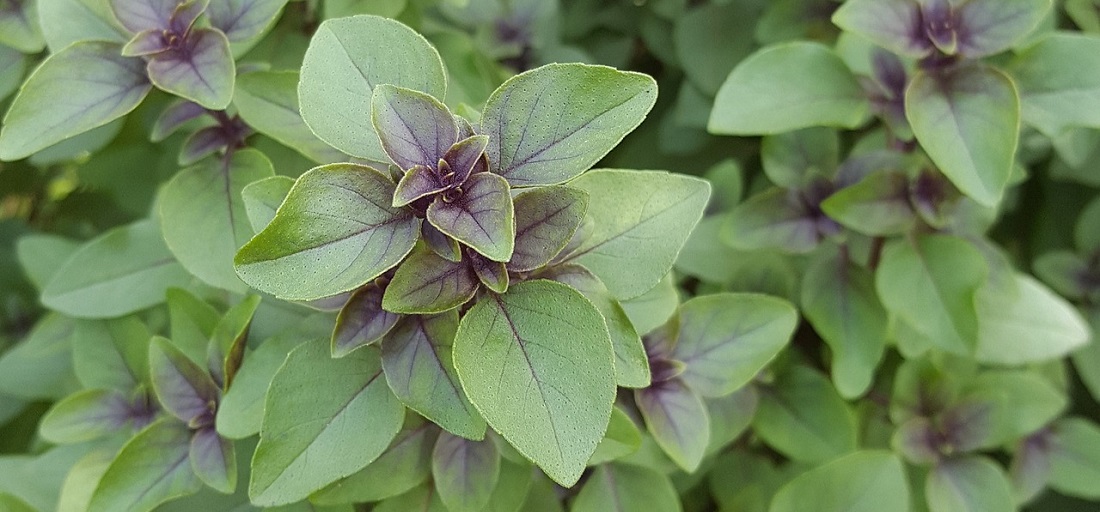
13. Holy Basil (Ocimum Sanctum), also called Tulsi
Holy basil is considered to be a preeminent adaptogen of Ayurvedic medicine that has been known for over 3,000 years. Due to its anti-inflammatory and antimicrobial properties people use it for instance to treat immune system, circulatory system, nervous system, and cancer, as well as to boost memory and concentration.
Modern science has proven holy basil’s ability to normalize high blood sugar and cortisol levels while helping protect your body against the psychological effects of chronic stress. Therefore, it helps your body maintain homeostasis of the stress hormone cortisol.
In addition, it may offer strong protection against oxidative and radiation stress on cells, and rebalance mood-associated neurotransmitters in the brain (10).
14. He Shou Wu (Polygonum Multiflorum Thunb), also known as Fo-Ti
Traditional Chinese medicine practitioners use He Shou Wu to treat the kidneys, liver and blood, to improve energy, promote longevity, and to even reverse gray hair.
Now, studies also have shown that He Shou Wu extracts and/or its isolated pure compound possesses numerous biological activities and health benefits. For example, it has anti-inflammatory, anti-bacterial, anti-diabetic, antioxidant, anti-cancer, and neuroprotective properties.
In addition, He Shou Wu may have therapeutic action against dyslipidemia, sleep disorders and neurodegenerative diseases (20).
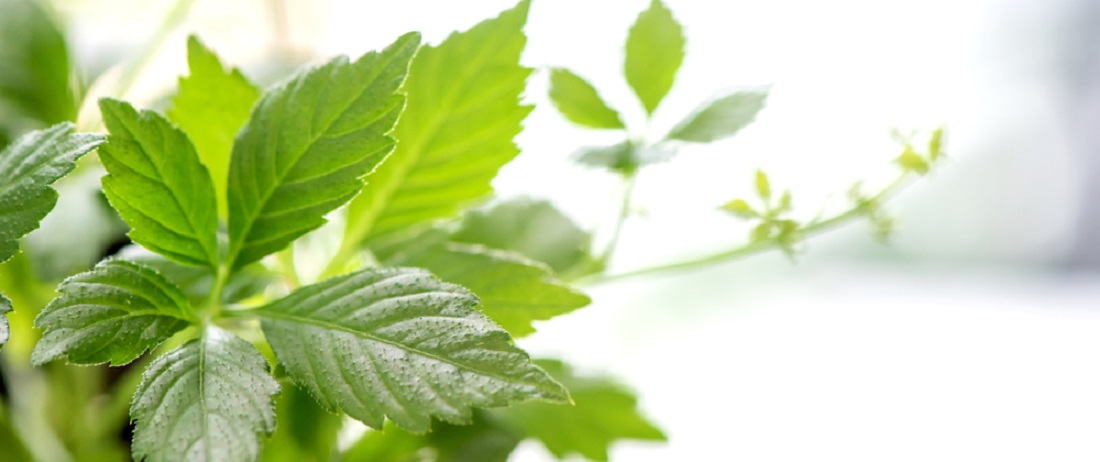
15. Jiaogulan (Gynostemma Pentaphyllum), also known as Gynostemma, Southern Ginseng, Five-Leaf Ginseng, Poor Man’s Ginseng, Miracle Grass, Fairy Herb, Sweet Tea Vine, and Gospel Herb
Jiaogulan is a dioecious, herbaceous climbing plant of the family Cucurbitaceae (the cucumber family) that grows wild in parts of Asia. For thousands of years, people have used the leaves to make tea and medicine. Many believe that Jiaogulan has numerous same health benefits as Ginseng, but there is no good scientific evidence supporting most of these claims.
However, there is scientific evidence that supports its use to lower LDL cholesterol, stabilize blood sugar and improve immunity. Jiaogulan has recently been incorporated into traditional medicine (21, 22).
16. Licorice Root (Glycyrrhiza Glabra, Glycyrrhiza Uralensis, Glycyrrhiza Inflata), also called, Licorice, Liquorice, Sweet Root, Gan Cao, Gan Zao, and Chinese Licorice
Many people use licorice root to treat conditions like sore throats, heartburn, acne or eczema, acid reflux, indigestion, hot flashes, coughs, and bacterial and viral infections.
However, even if this herb might help some people in some cases, and there are some small human studies that support the claim that licorice root may be helpful for atopic dermatitis and sore throat – there isn’t enough high-quality evidence to clearly confirm its use for any health condition.
In addition, licorice root can affect your blood pressure, so you should use it only under the supervision of a doctor (23, 24).

17. Lycium (Lycium Barbarum), the fruits of Lycium are called Wolfberry and Goji Berry
Lycium contains polysaccharides, betaine, phenolics, carotenoids, cerebroside, 2-O-β-d-glucopyranosyl-l-ascorbic acid, β-sitosterol, flavonoids and vitamins (specifically, riboflavin, thiamine, and ascorbic acid).
The traditional Chinese herb Lycium has been reported to mediate notable anti-aging effects, through immunoregulatory, antioxidant, anti-apoptotic, and DNA damage reducing activities. Therefore, it may be used as a source of antioxidants in pharmaceutical, nutraceutical, or cosmetic products, and may be useful for counteracting age-related oxidative stress.
However, additional studies are needed to understand how exactly Lycium works (25).
18. Maca (Lepidium Meyenii), Also Known as Peruvian Ginseng, and Ginseng Andin
Though, Maca is nothing like ginseng, but is a relative of radish and smells similar to butterscotch. It is highly nutritious root that reportedly may increase strength, improve energy and stamina, as well as boost sex drive and fertility. However, this is still controversial among researchers (26).
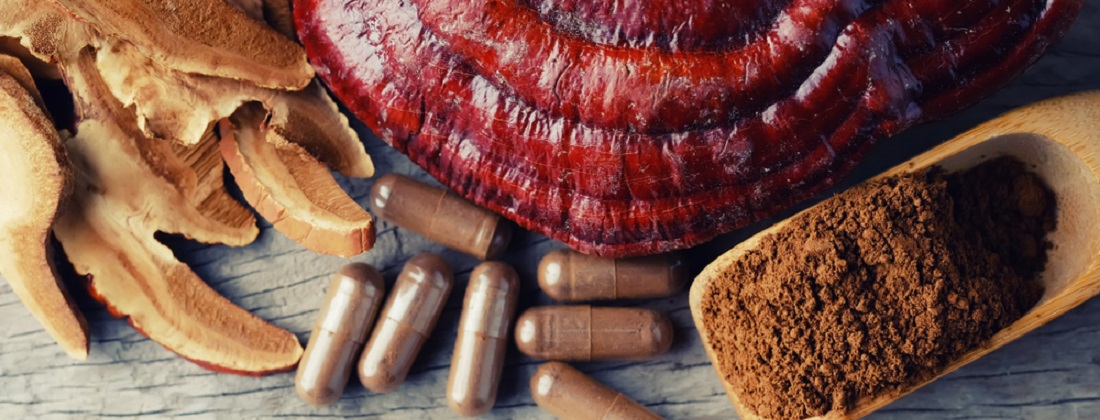
19. Reishi (Ganoderma Lucidum), also known as Lingzi, “10,000 Years Sponge”, “Queen of Plants”, “Immortal Sponge”, and “Life Elixir”
Red Reishi mushroom has been known in China, Japan, and other Asian countries for its miraculous health-enhancing and longevity promoting effects for thousands of years. Due to its variety of potential health benefits and rich composition people use Reishi mushroom as a medicine to:
- Boost the immune system
- Fight cancer
- Enhance many body functions
- Calm the mind
- Relieve cough and asthma
- Reduce insomnia
- Lessen fatigue
- Improve the work of vital organs
- Strengthen and heal overall health
- As well as to and to to increase the so-called shen. In Chinese medicine shen is the connection of heart and mind – the channel of spirituality.
Traditional medicine practitioners believe Red Reishi can sustain life, increase life expectancy, promote health and balance body functions without any side effects.
Although Reishi mushrooms themselves can be consumed raw, it is also custom to use supplements, extracts or powdered forms of the mushroom that contain these particular healing molecules.
In nature there are 6 types of Reishi, but Red Reishi mushroom (Ganoderma lucidum), is the most studied one and possesses the strongest medicinal effects.
The fruiting bodies of the Reishi mushroom are a magnificent source of nutritionally important minerals, vitamins (mainly B-complex vitamins and vitamin D), antioxidants, amino acids, macronutrients, as well as protein (despite not being animal-based).
Despite the high mineral and vitamin content – the wide spectrum of prophylactic and therapeutic effects of Reishi mushroom is mainly due to the high content of polysaccharides, triterpenoids and germanium. It’s because Reishi contains an enormous collection of bioactive polysaccharides, beta-glucans and more than 120 different triterpenoid compounds.
Some people use it also for Alzheimer disease, cancer, diabetes, and cold sores. In Japan, Reishi dry extract belongs in the official list of antitumor drugs. Although research is still ongoing and most evidence is based on animal studies, there is reason to believe that the beneficial effect of Reishi on humans is similar.
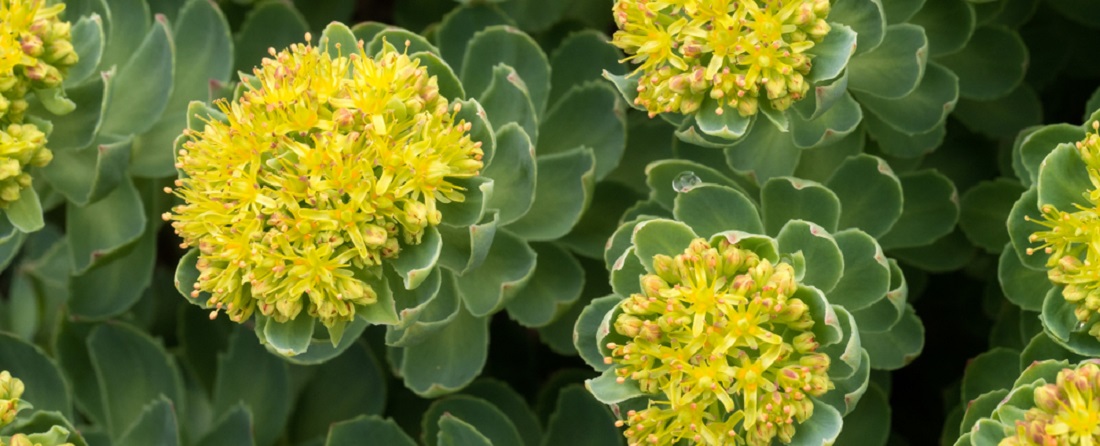
20. Rhodiola (Rhodiola Rosea), also called Golden Root, Arctic Root, King’s Crown, and Rose Root
Rhodiola is a flowering adaptogenic herb that grows in cold, high-altitude areas of Asia and Europe. Traditional medicine practitioners (particularly in Scandinavia, Russia, and other mountainous, cold regions) use it for a wide range of conditions. For example, some people believe rhodiola may help:
- Strengthen the immune system
- Restore balance in blood sugar
- Help with fertility
- Boost alertness
- Reduce fatigue
- Fight depression
- Treat stress
- Enhance physical and mental performance
- Alleviate stress induced eating disorders
- Lessen anxiety
- Treat anemia, as well as headaches
However, large, valid scientific studies on these effects are lacking (27).
21. Maral Root (Rhaponticum Carthamoides), also called Russian Leuzea
Maral root is an adaptogenic perennial herb that has been used for centuries in eastern parts of Russia for its noticeable medicinal properties. Different types of extracts, preparations, and individual compounds derived from this plant may have a wide range of pharmacological effects on various organs like the brain, blood, nervous and cardiovascular systems. In addition, it may affect work capacity, reproduction, and sexual function.
Even more, the preparations and extracts from the plant, have shown to possess several additional effects such as antimicrobial, antiparasitic, antioxidant, immunomodulatory, and anticarcinogenic activities (28).
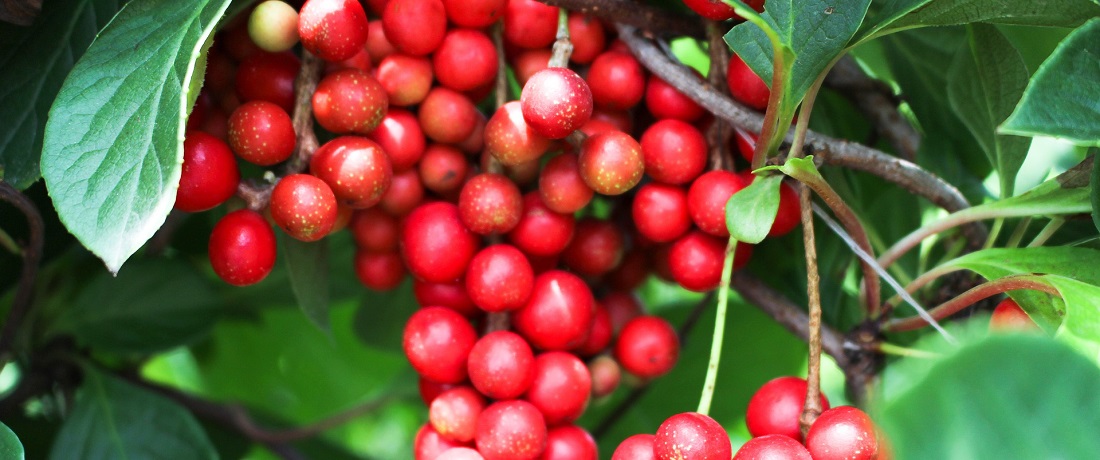
22. Schisandra (Schisandra Chinensis), also called Five-flavor Berry, Five-flavor Fruit, Magnolia Berry
Schisandra is a vine plant native to forests of Russian Far East, Korea and Northern China with the petite berries that contain sweet, salty, bitter, sour and pungent notes. This adaptogen may be possibly effective for mental performance, as it seems to improve attention, concentration, and speed of thinking. In addition, Schisandra fruit extracts may lessen liver damage on people with hepatitis.
Other benefits and uses that have been less confirmed by scientist include preventing early aging, increasing lifespan, normalizing blood sugar and blood pressure, treating high cholesterol, stimulating the immune system, speeding recovery after surgery, as well as treating pneumonia, asthma, coughs, sleep disorders (insomnia), irritability and tiredness linked with neurasthenia (emotional disturbance), premenstrual syndrome (PMS), dysentery, chronic diarrhea, night sweats, spontaneous sweating, thirst, involuntary discharge of semen, erectile dysfunction (ED), physical exhaustion, excessive urination, depression, and irritability.
Some people also use Schisandra to:
- Improve vision ad muscular activity
- Protect against radiation
- Prevent motion sickness
- Boost energy at the cellular level
- Prevent infection
- Improve the health of the adrenal glands
- Lessen the frequency and severity of attacks of fever in children (associated with an inherited disease called familial Mediterranean fever).
Many people eat schisandra fruit as a food (29).

23. Shatavari (Asparagus Racemosus), also known as Satavari, and Satavar
Shatavari is a species of asparagus common throughout northern Australia, India and the Himalayas. Some people believe this plant may improve fertility and have a variety of health benefits, especially for the female reproductive system. Therefore, it’s used as a tonic primarily by women (30).
24. Shilajit (Asphaltum Punja-bianum), also called Mumijo, and Andean Shilajit
Shilajit is a blackish-brown and sticky decomposed plant matter found primarily in the rocks of the Himalayas. It develops over centuries from the slow decomposition of plants.
Ayurvedic medicine practitioners use it for its immune-stimulating effect, antiallergic activity, as well as for its positive effect on overall health and well-being. In addition, Shilajit preparations have been successfully used also for the prevention and treatment of infectious diseases (32).
25. Suma (Hebanthe Eriantha), also called Brazilian Ginseng, Para Tudo, Pfaffia, Corango-acu
People in South America know this traditional herbal medicine as “para tudo” which means “for all”. Some people use the root and/or leaves to treat numerous conditions, such as anemia, arthritis, asthma, arteriosclerosis, bronchitis, circulatory problems, cancer, diabetes, diarrhea, digestive disorders, dysentery, estrogenic, fatigue, fever, headache, high blood pressure, hormonal problems, impotence, malaria, for rejuvenation, against malaria, rheumatism, sexual dysfunction, sterility, stress, ulcers, and tumors.
Suma is also said to possess analgesic, aphrodisiac, and anti-aging effects (31).

26. Moringa (Moringa Oleifera), also called Drumstick Tree, Horseradish Tree, Ben Oil Tree or Benzolive Tree
Moringa trees are highly valued in Ayurvedic medicine, and are recommended for the prevention and treatment of 300 diseases. This super-plant is also extremely rich in nutrition. In fact, it is mentioned, that moringa contains:
- 25 x more iron than spinach,
- 17 x more calcium than milk,
- 15 x more potassium than bananas,
- 10 x more vitamin A than carrots,
- 9 x more protein than yoghurt,
- and 7 x more vitamin C than oranges.
Moringa contains in total:
- 92 nutrients including vitamins, minerals, amino acids, fats, sterols, alcohols, ketones, acids, alkaloids and flavonoids.
- 46 antioxidants
- 36 anti-inflammatory agents
- 18 amino acids
- 9 essential amino acids

27. Dandelion (Taraxacum Officinale), or Common Dandelion
The dandelion botanical name “Taraxacum officinale” speaks for its usefulness and refers to the healing effect. Namely, ‘Taraxacum’ comes from the Greek and means ‘anti-inflammatory’ and ‘officinale’ refers to the common name for herbs. However, the anti-inflammatory effect is not the only benefit of the dandelion.
Dandelion can help to fight inflammation, boost the immune system, act as an anti-aging agent in skin care products, and has numerous other health benefits. Learn more.
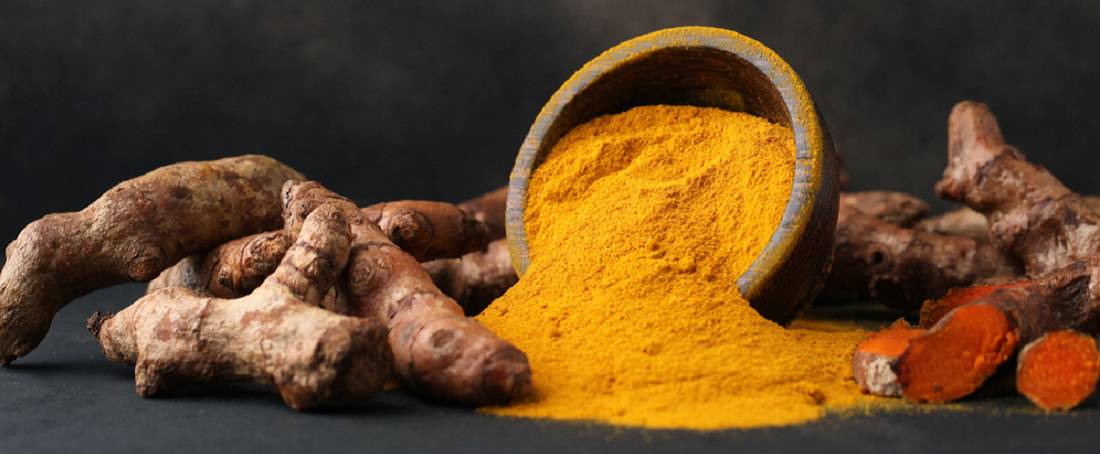
28. Turmeric (Curcuma Longa)
As a member of the ginger family (Zingiberaceae), this spice with a very strong aroma and bitter taste is similar to ginger root. Therefore, turmeric is very common in many Asian cuisines and it’s the spice that gives curry its yellow color. Though it is primarily used as a spice, at the same time it is one of the most well-known medicinal herbs. Turmeric has been used for thousands of years in traditional Ayurvedic and Chinese medicine.
Now also studies demonstrate the strong antioxidative, anti-inflammatory, anti-viral, anti-cancer, anti-pain and other beneficial and healing effects of turmeric.
Turmeric is now one of the most studied antioxidant herbs in the world. Curcumin is a principal curcuminoid and the main active ingredient in Turmeric, and piperine enhances the absorption of curcumin even by 2,000%. Therefore, the best curcumin supplements now contain piperine, which increases curcumin effectiveness.
Moreover, the piperine contained in pepper also has a bactericidal effect, it reduces appetite and improves mood. According to a study curcumin and piperine separately, and in combination could be potential cancer preventive agents (33). However, do not self medicate as more research is needed.
Curcumin with piperine may also be helpful in the supportive treatment of:
- Arthritis
- Osteoarthritis
- Trauma
- Gastritis
- Ulcerative colitis and many other diseases associated with pain and inflammation
- Cardiovascular pathologies
- Atherosclerosis
- Obesity
- Stress
- Depression
- Memory and focusing problems
NB! The information provided here is for informational purposes only, so do not consider it as health care or medical diagnosis and treatment. Do not consider this information as a guarantee of the results you want to achieve. In addition, do not take this information as a replacement for the advice of your physician or other healthcare professional.
Even more, you should not use it to diagnose or treat a health problem. Before changing or discontinuing your existing medication, treatment, or care, or taking any dietary supplements, be sure to consult with your healthcare professional or doctor before starting any diet or program, or if you suspect you may have a medical condition.
Written by Maria-Helena Loik
Pictures: Pexels.com, Pixabay.com, Shutterstock.com
Sources:
- All About Adaptogens | Institute of Culinary Education (ice.edu)
- What Are Adaptogens? (webmd.com)
- Your Guide To Adaptogens – Forbes Health
- Adaptogens List: If You’re New To Herbal Medicine, Here’s What We Recommend (sovereignty.co)
- Antioxidant evaluation of three adaptogen extracts – PubMed (nih.gov)
- Amla: Indian gooseberries vs. cancer, diabetes, and cholesterol | NutritionFacts.org
- Amla (Emblica officinalis Gaertn), a wonder berry in the treatment and prevention of cancer – PubMed (nih.gov)
- An Overview on Ashwagandha: A Rasayana (Rejuvenator) of Ayurveda (nih.gov)
- Astragalus | NCCIH (nih.gov)
- How To Deal With Stress With Adaptogens – Life Extension
- How To Use Bilberry Extract To Protect Health – Life Extension
- Salvia miltiorrhiza (Dan Shen) Significantly Ameliorates Colon Inflammation in Dextran Sulfate Sodium Induced Colitis (nih.gov)
- Codonopsis (Dang Shen) – Proven Herbal Remedies (chineseherbshealing.com)
- Elderberry: Health Benefits, Risks, Uses, Effectiveness (webmd.com)
- ELEUTHERO: Overview, Uses, Side Effects, Precautions, Interactions, Dosing and Reviews (webmd.com)
- Adaptogens
- Adaptogens – Whole Health Library (va.gov)
- List of Adaptogens, and What These Adaptogenic Herbs Can Do For You – Gardening Channel
- Tinospora cordifolia: One plant, many roles (nih.gov)
- Review of clinical studies of Polygonum multiflorum Thunb. and its isolated bioactive compounds (nih.gov)
- JIAOGULAN: Overview, Uses, Side Effects, Precautions, Interactions, Dosing and Reviews (webmd.com)
- Gynostemma pentaphyllum – Wikipedia
- Licorice Root | NCCIH (nih.gov)
- Licorice Root: Benefits, Uses, Precautions, and Dosage (healthline.com)
- Lycium Barbarum: A Traditional Chinese Herb and A Promising Anti-Aging Agent (nih.gov)
- 9 Benefits of Maca Root (and Potential Side Effects) (healthline.com)
- Rhodiola rosea: Benefits, side effects, and dosage (medicalnewstoday.com)
- Chemistry and pharmacology of Rhaponticum carthamoides: a review – PubMed (nih.gov)
- SCHISANDRA: Overview, Uses, Side Effects, Precautions, Interactions, Dosing and Reviews (webmd.com)
- Shatavari: Health benefits, uses, and evidence (medicalnewstoday.com)
- Suma (utep.edu)
- Mumijo Traditional Medicine: Fossil Deposits from Antarctica (Chemical Composition and Beneficial Bioactivity) (nih.gov)
- Targeting Breast Stem Cells with the Cancer Preventive Compounds Curcumin and Piperine (nih.gov)
